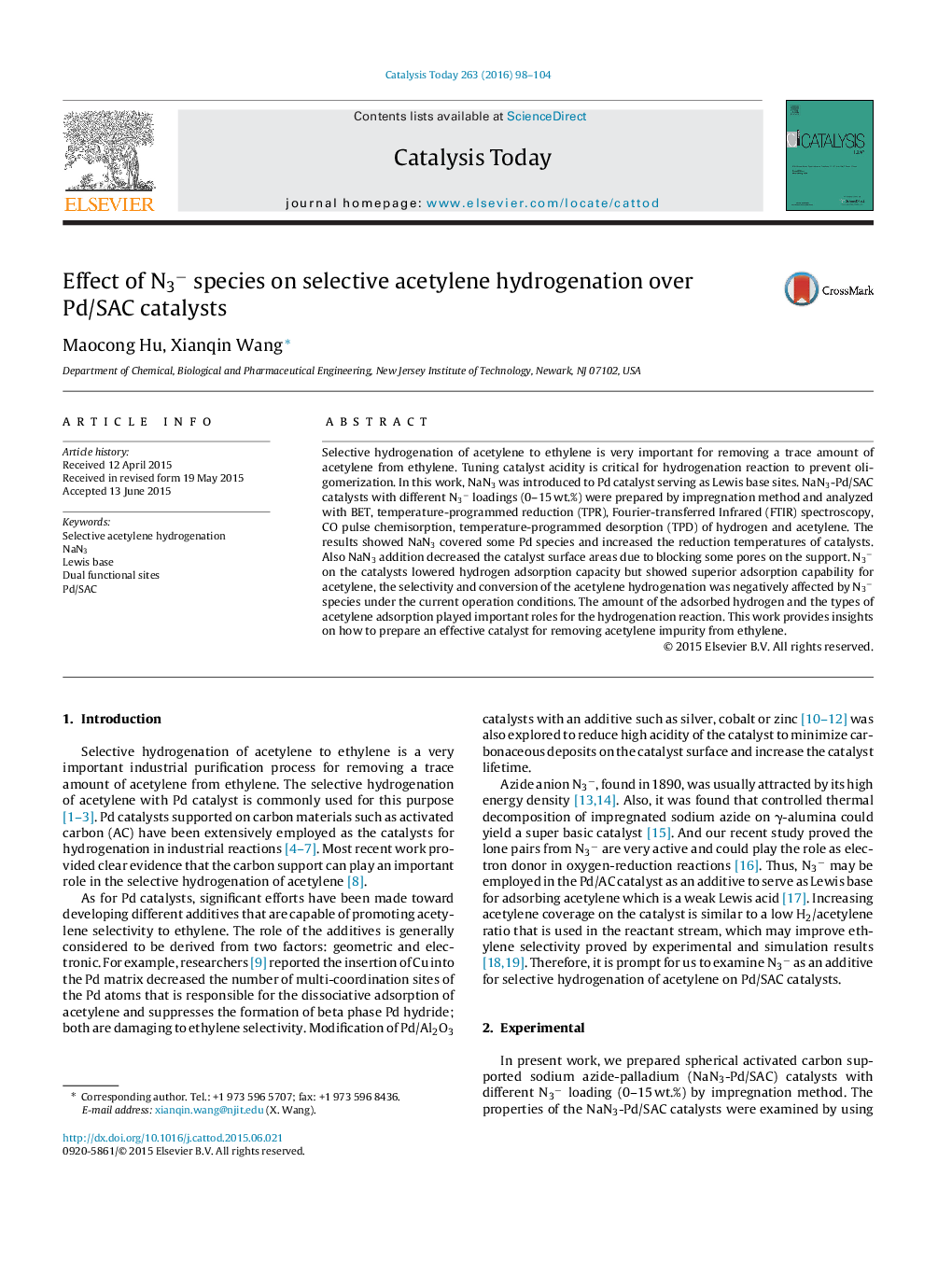| Article ID | Journal | Published Year | Pages | File Type |
|---|---|---|---|---|
| 53408 | Catalysis Today | 2016 | 7 Pages |
•NaN3 was added to Pd/SAC catalysts as Lewis base promoter.•NaN3 addition increased acetylene adsorption dramatically.•Dual function sites with N3− and Pd sites increased acetylene adsorption.•Acetylene adsorption type was critical for selective hydrogenation.
Selective hydrogenation of acetylene to ethylene is very important for removing a trace amount of acetylene from ethylene. Tuning catalyst acidity is critical for hydrogenation reaction to prevent oligomerization. In this work, NaN3 was introduced to Pd catalyst serving as Lewis base sites. NaN3-Pd/SAC catalysts with different N3− loadings (0–15 wt.%) were prepared by impregnation method and analyzed with BET, temperature-programmed reduction (TPR), Fourier-transferred Infrared (FTIR) spectroscopy, CO pulse chemisorption, temperature-programmed desorption (TPD) of hydrogen and acetylene. The results showed NaN3 covered some Pd species and increased the reduction temperatures of catalysts. Also NaN3 addition decreased the catalyst surface areas due to blocking some pores on the support. N3− on the catalysts lowered hydrogen adsorption capacity but showed superior adsorption capability for acetylene, the selectivity and conversion of the acetylene hydrogenation was negatively affected by N3− species under the current operation conditions. The amount of the adsorbed hydrogen and the types of acetylene adsorption played important roles for the hydrogenation reaction. This work provides insights on how to prepare an effective catalyst for removing acetylene impurity from ethylene.
Graphical abstractFigure optionsDownload full-size imageDownload high-quality image (204 K)Download as PowerPoint slide
